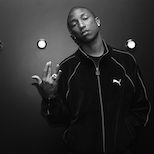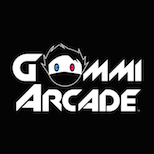The Visionaire
09.13.2011
ART & DESIGN
L+T: How does technology factor into your work?
KD: I grew up around artists who used technology frequently in their work, so its utility as a means and method of expression is native to me. I remember visiting my uncle Nam June Paik’s studio in SoHo when I was younger; he’d be hanging out with other artists like Yoko Ono, Bill Viola and Christo with hundreds of different CRT monitors lying around all over the place. Machines were constantly flickering on and off, behaving outside of their expected functions. I watched Nam June elevate video from its fairly cut-and-dry communicative limitations and turn it into a full-blown art form with his wildly elaborate installations in the Whitney and Guggenheim. My uncle predicted so much of what is happening today in media, video and the internet through his work. Most tellingly, he regularly made use of the term “information superhighway” in the 1970s, long before Al Gore took credit for inventing it. When I was an art student at Carnegie Mellon, I had the opportunity to be a student of Professor Randy Pausch on a number of projects that focused on the developing field of virtual reality. Those studies informed my ongoing interest in how we, as a species, are seemingly beginning to merge with the technology we use on a daily basis. I’m fascinated to see how video games and movies, in particular, will converge down the line.
L+T: As a creative director at Wieden + Kennedy, and as an independent creative that has built his own body of work, how do you reconcile the two jobs? What are the merits of having your feet in both worlds?
KD: I don’t really look at them as separate things…they just provide their own respective opportunities. Commercial projects allow me to explore communicative strategy in ways that my personal projects don’t, and they also enable me to work on million-dollar-plus-scale productions. There’s no denying how awesome it is to see your vision go from paper to full-scale, Hollywood-level production sets. I get to play with new technology and work with some of the greatest innovators in contemporary filmmaking. Plus, working for clients allows me to fund my own projects, so the relationship is mutually dependent. You have to be realistic about your goals and philosophy as an artist working in 2011. The way money flows and the industry functions is dramatically different from how things used to work even three, four years ago. Fundamentally, making things is contingent on having the resources to do so; this is a simple fact that too many artists forget or ignore. It’s always been clear to me that more money will allow me to create more work, so having a “day job” that requires me to be as creative as I am when working on my passion projects is pretty amazing. Both of them make me better at each of them, so to speak. If I was, however, forced to make a distinction, I’d argue that commercials are not art – they can be artful, but in and of themselves they are not works of art. And, additionally, I’d say that my personal projects afford me the avenue to really make statements as an artist.
L+T: How do you see traditional creative agency roles shifting around now that they are hiring people like you?
KD: There aren’t too many independently successful creatives who work with bigger agencies like I do…and, honestly, why would there be? Making your own money and controlling your own creative output has long been regarded as the end state in the creative industry. However, Wieden has always been known for taking game-changing, unorthodox risks, so I was honored when they reached out. If you look at a lot of the top creatives in the industry, all of them are known for approaches and thinking that shook up how things traditionally worked. John Jay, the global creative director of Wieden+Kennedy, is a visionary who is widely known for recognizing the benefits of bridging culture and commerce. Neal Arthur the managing director of the W+K NY office is a big reason why I am there, as well as Phil Chang, one of my collaborators. Kevin Proudfoot, who now heads up Google Creative Labs (and was essential in bringing me into the agency), is another individual who isn’t afraid to use inventive processes and philosophies if they work better than the status quo. Because technology, culture and advertising are all part of this codependent, accelerating force that seems to shift daily, any agency that has the foresight to hire “non-traditional” creatives is going to win. This is because artists who can embrace “the new” are the ones who redefine the cultural, and transitively communicative, landscapes. Commerce always follows culture, so it makes sense to have artists be an integral part of that conversation.
L+T: Who would you like to collaborate with in the future?
KD: I’d love to work with JAY Z on a project that uses music as a completely new narrative format. I’d love to work with Quentin Tarantino and The RZA on a film. I’d love to work on communicative technology projects with Google. I’d love to go eat with Anthony Bourdain and my homeboy chef Eddie Huang. Oh, and I’d love to work on a musical project with Mulatu Atstake, who is regarded by many as the father of Ethiopian jazz, which, by the way, is the shit – in case you didn’t already know. (Kenzo Digital)





